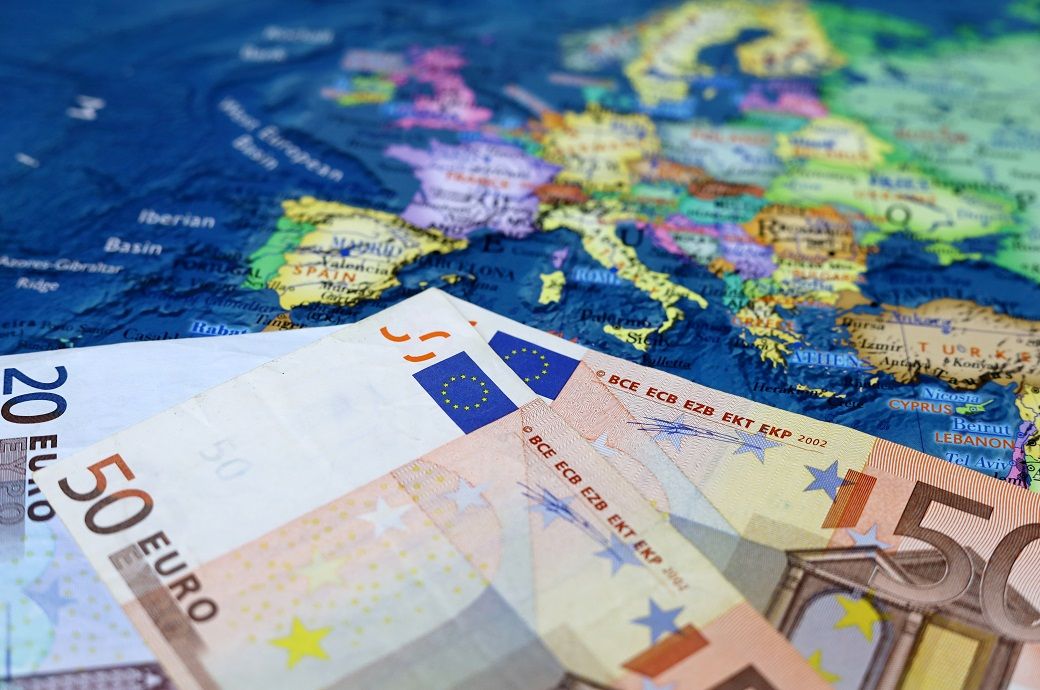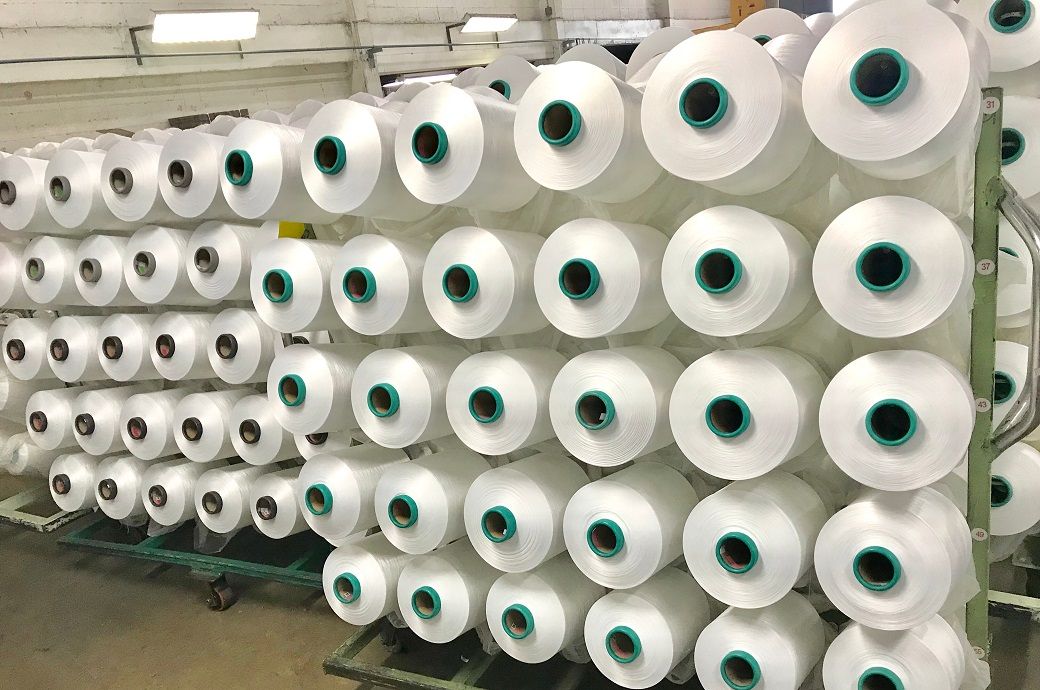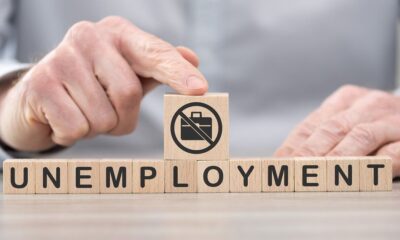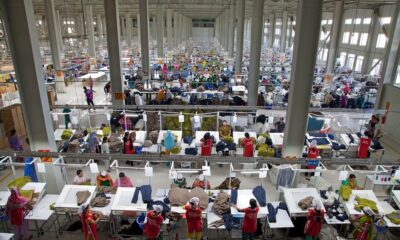Fashion
Eurozone GDP growth to stay subdued at 1.1% in 2025: S&P

After 2025, the growth is expected to accelerate above the potential, reaching 1.4 per cent in 2027. Lower policy rates, strong private balance sheets that translate into a resilient labour market, and expansive fiscal policies will provide medium-term tailwinds.
“Our forecasts have only changed slightly since our last update in June 2025. The US and EU administrations’ trade deal has not altered the macroeconomic picture much. Our higher GDP growth forecasts for 2025 reflect a larger GDP carryover at the end of 2024 due to data revisions in some countries,” S&P Global Ratings said in its latest report titled, ‘Economic Outlook Eurozone Q4 2025: Recovery Continues Despite Consumer Hesitancy.’
Eurozone GDP growth is forecast at 1.1 per cent in 2025, with recovery accelerating to 1.4 per cent by 2027, supported by lower rates, strong labour markets, and fiscal policy, according to S&P Global.
Inflation is projected at 2.1 per cent in 2025 before easing.
Risks include higher US tariffs, geopolitical tensions, and weak confidence, though impacts vary across countries.
The eurozone economy remained resilient in the second quarter (Q2) of 2025. However, this is largely because exports to the US—which were front run ahead of tariffs in the first quarter—were slow to reverse in the second quarter. The report believes this reversal will extend into the third quarter.
The euro has appreciated more quickly than expected, largely owing to market concerns about the independence of US monetary policy. While this has given European consumers an extra boost via lower energy prices, it has not prompted a downward revision of inflation forecasts.
Strong labour-market conditions are expected to keep real wage growth above productivity for some time, sustaining inflationary pressure over the medium term.
S&P Global Ratings projects inflation to ease to 1.8 per cent in 2026 and 1.9 per cent in 2027, aligning closely with the European Central Bank’s (ECB) 2 per cent target. Barring external shocks, the ECB deposit facility rate is considered to have bottomed out at 2 per cent in the current rate-cutting cycle. Quantitative tightening is also nearing completion, which may ease long-term yields on euro-denominated government bonds.
Key risks to the baseline growth outlook include heightened tariffs, geopolitical tensions, and weak consumer confidence in certain European economies. Additional spillover effects may emerge from slower growth among Europe’s major trading partners, particularly the US, added the report.
Inflation risks remain two-sided: it could rise further in the event of escalating trade tensions, fiscal stimulus overlapping with labour-market bottlenecks, or geopolitical shocks disrupting commodity markets. Conversely, it could fall if trade diversions favour Europe or the euro appreciates more sharply than expected.
Following the recent EU–US trade announcement, baseline assumptions now include a maximum US tariff of 15 per cent on most manufactured goods. This compares with June 2025 assumptions of 10 per cent on all goods.
Despite these changes, the macroeconomic implications remain largely unchanged. At the aggregate EU level, the direct trade impact is estimated at around -0.4 per cent of GDP, only slightly lower than the -0.5 per cent implied by the April 2 announcement. Nevertheless, tariffs are now about eight times higher than they were before April, when the US levied an average tariff of less than 2 per cent on European imports.
Importantly, the tariff burden will vary across countries. Ireland and Belgium face fewer negative impacts. In contrast, Switzerland—though not an EU member—has seen its outlook deteriorate sharply after the US imposed 39 per cent tariffs, significantly affecting its growth prospects.
Fibre2Fashion News Desk (SG)
Fashion
India’s QCO rollback boosts textile competitiveness, aids trade talks

However, during negotiations with the United States, the European Union and several other developed economies, these very QCOs were repeatedly flagged as opaque non-tariff barriers, complicating market access and slowing progress on key FTAs. When major trade partners made it clear that India’s expanding QCO regime was not aligned with global norms and posed compliance concerns under the WTO’s Technical Barriers to Trade framework, the long-pending course correction finally gained urgency, as industry insiders hinted about sudden policy shift of the Indian government.
The recent withdrawal of QCOs for essential textile raw materials—covering PTA, MEG, PSF, PFY, FDY, POY and several technical polymers—has opened the door for full value addition in India’s MMF and textile ecosystem. Manufacturers across weaving, knitting, processing, technical textiles and garmenting say the rollback has restored access to globally benchmarked inputs at competitive prices, reversing the cost escalation that had eroded export competitiveness. Industry representatives note that the move has already begun easing supply bottlenecks, narrowing the gap between domestic and global prices and encouraging companies to revive deferred expansion plans.
Fashion
GS1 France appoints Laura Barnac as executive chair

Published
November 18, 2025
GS1, the international standards organisation underpinning barcode and QR Code technology, has announced the appointment of Laura Barnac as executive chair of its French division.
A specialist in business transformation, Laura Barnac has led projects for groups such as Unilever and LVMH, as well as for mid-cap companies including Daregal. Co-founder of the start-ups Voka and Melco, focused on innovation and marketing, she has also served as an adviser to Bpifrance and Sakina M’Sa, and oversaw Moët Hennessy’s online operations.
A member of the GS1 France Board of Directors since 2019, Laura Barnac now succeeds Didier Veloso, the organisation’s executive chair for the past four years, beginning a tenure that will be marked by the progressive migration from barcodes to augmented QR Codes.
“Laura Barnac has impeccable credentials and a nuanced understanding of the challenges ahead,” say Bertrand de Senneville and Philippe Lemoine, co-chairs of the Supervisory Board of GS1 France. “She has also demonstrated throughout her career a leadership style grounded in listening and the human element, which will help accelerate and amplify the transformation under way.”
Launched in 1973 in the US with the invention of the barcode, and rolled out in Europe in 1977, GS1’s mission is to ensure technological coordination among all players in commerce with regard to product identification tools. The not-for-profit organisation brings together more than 58,000 member companies in France, and over 2 million worldwide.
This article is an automatic translation.
Click here to read the original article.
Copyright © 2025 FashionNetwork.com All rights reserved.
Fashion
Will India-US trade deal shake up Asia’s apparel export dynamics?

India and the US are close to sealing a landmark trade deal that could ease the steep tariffs imposed by Washington earlier this year, as other Asian apparel export hubs keep a keen eye on the developments.
At a recent White House event, President Donald Trump struck an optimistic tone, noting that Washington and New Delhi were “getting close” to finalising a fair-trade deal.
Source link
-

 Tech1 week ago
Tech1 week agoFrom waste to asset: Turning ethanol production CO₂ into jet fuel
-

 Tech3 days ago
Tech3 days agoNew carbon capture method uses water and pressure to remove CO₂ from emissions at half current costs
-

 Politics5 days ago
Politics5 days agoBritish-Pakistani honoured for transforming UK halal meat industry
-

 Sports3 days ago
Sports3 days agoTexas A&M officer scolds South Carolina wide receiver after touchdown; department speaks out
-

 Business3 days ago
Business3 days agoThese 9 Common Money Mistakes Are Eating Your Income
-

 Tech1 week ago
Tech1 week agoSecurity flaws in portable genetic sequencers risk leaking private DNA data
-

 Fashion5 days ago
Fashion5 days agoAdidas & Patrick Mahomes expand NIL programme with Texas Tech athletes
-

 Business4 days ago
Business4 days agoWhat’s behind Rachel Reeves’s hokey cokey on income tax rises?


















